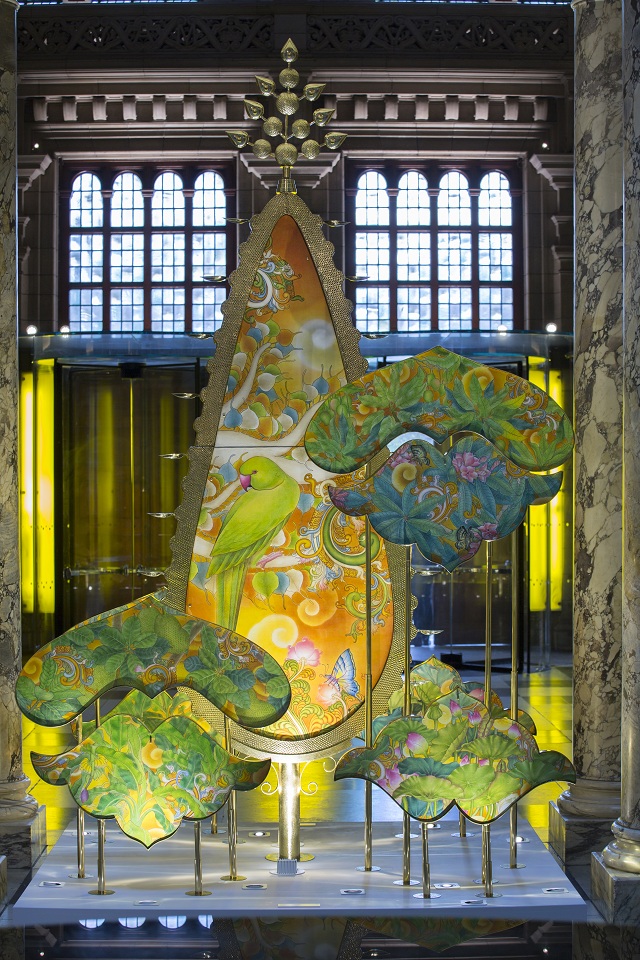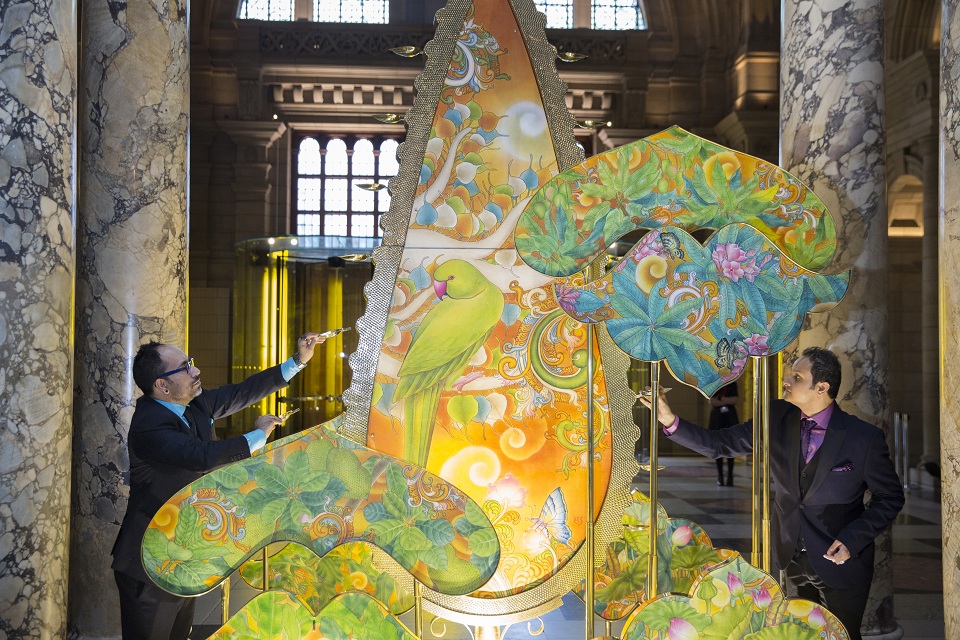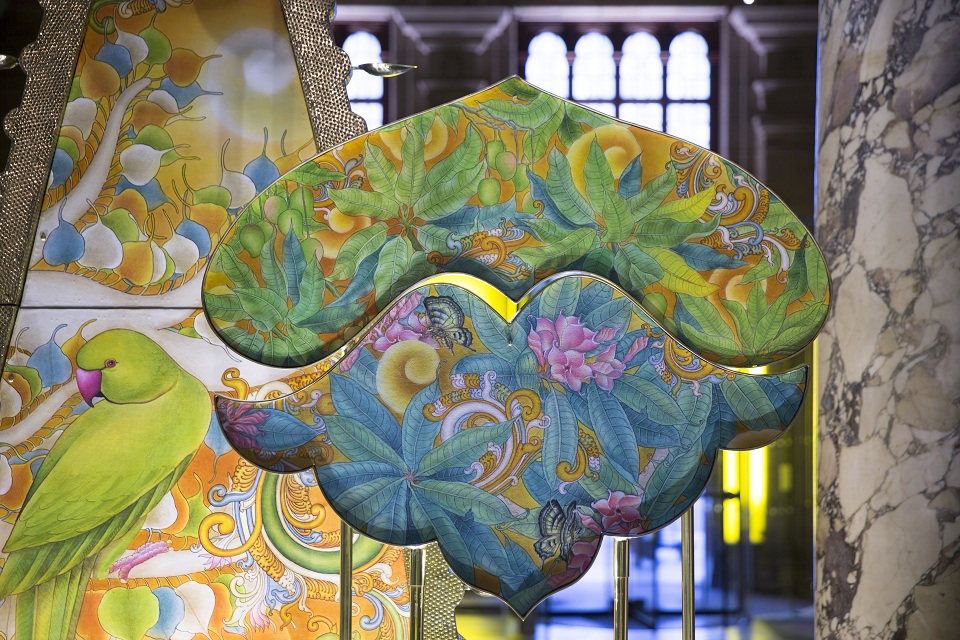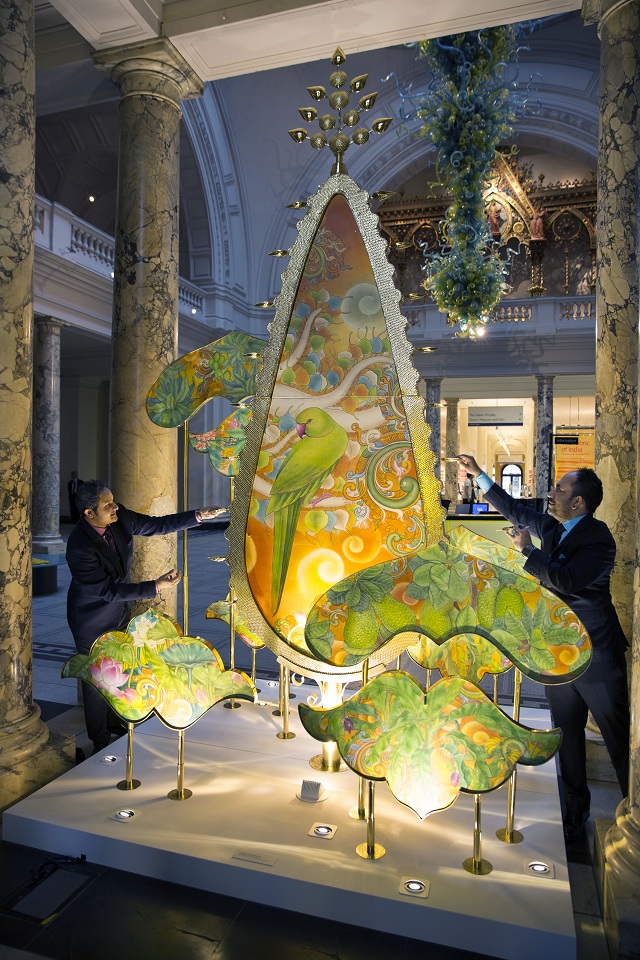The Kalpataru is a wish fulfilling tree in Indian mythology. It inspired this installation, which draws on India’s rich cultural and artistic traditions. The framework was made from handcrafted beaten brass. The painting, featuring traditional motifs, was done by artists from the southern state of Kerala in their distinctive mural-painting style. Trees, plants and lights feature in various celebrations and special occasions across India.
The concepts of nature and culture represented by the mythical ‘tree of life’ are a reflection on some of the customs observed during traditional Diwali celebrations. The tradition of decorating and worshipping the ‘Tulsi’, or holy basil, is a common practice in some Indian homes during the five days of Diwali, which the designers see as a modern-day interpretation of the Kalpataru. They intend the light installation to not only celebrate illumination in its literal sense but also as a metaphor for the celebration of hope, prosperity and ecology.
Sarthak and Sahil formed their Delhi-based design studio in 2009 and since then have worked across many areas of design, from furniture and lifestyle products, to graphics, lighting, interiors and installations. They said: “To us, the V&A is a treasure trove of meaningful objects that narrate varied human customs and traditions over time. For this festive installation we wanted to design something that encapsulates both diverse cultural symbolism and contemporary customs, embodying the metaphorical tree with the spirit of both Diwali and Christmas celebrations which everyone can enjoy”.A festive light installation in the Grand Entrance of the V&A, created by Delhi-based designers Sarthak and Sahil as part of the V&A India Festival. Named after a wish-fulfilling divine tree in Hindu mythology, the installation celebrates the concepts and customs associated with the ancient Hindu festival of Diwali, or ‘the festival of lights’.



























